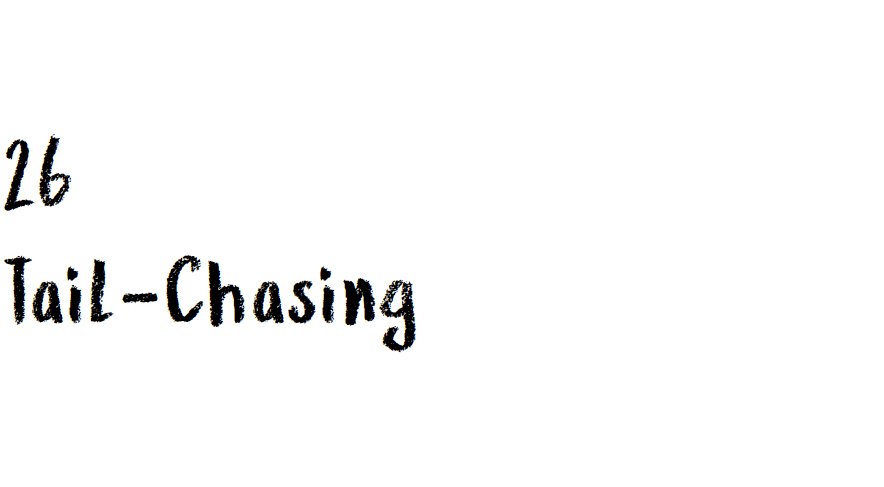Behind every cat is something he doesn’t quite understand: his tail.
The tail sprouts fuzzily from the bum. As kittens grow up, their tails become longer and thicker—but they don’t seem to realize they’re becoming adults and certainly don’t know they have great big tails attached to them. Rather, they vaguely sense there is something following them, but when they turn around, their tails droop and they see nothing.
After many failed attempts at finding out what lurks behind them, cats give up and slowly get used to the sensation of being tailed at all times.
It’s not like cats are constantly turning around to seek their tails. They might look back once in a while, but their tails assume this is part of a game and swiftly duck out of sight. As time goes on, it begins to seem as if tails have a life of their own, and although they happen to be conjoined, cats are cats and tails are tails.

Cats generally don’t seem to believe they have tails, while tails don’t regard themselves as belonging to cats.
As a result, cat tails often seem outside of their body’s control, moving according to rhythms of their own. Even when Cat has been snoring for ages, his tail continues unabated, unfurling and snapping back as if it contains a length of elastic and is playing a game with itself. Cat is never woken by these shenanigans, so sound are his slumbers. The ponderous swaying of his tail has a hypnotic effect on him. Swing to the left, then to the right. Tick tock tick tock … drowsiness follows.
One time, Cat had raised a rear leg during a meticulous grooming session and was licking away at his hindquarters when, all of a sudden, his head froze in midair, eyes round and staring. A large, hairy object had hovered into his view, just below his own tailbone. Stunned, Cat stared fixedly, his concentration slackening. No one could have known what he was thinking. After a very long time, he seemed to come back to earth but continued facing this unfamiliar object with utter astonishment all over his face. Meanwhile, the tail was out of control, moving to a rhythm all of its own, now side to side, now up and down, smugly tormenting Cat.
With a sharp movement, one of Cat’s front paws darted out to grab hold of the tail, bringing it to his mouth, while a rear leg tried but failed to stomp on it. Regardless, Cat continued gnawing, now and then sticking out his tongue to lick it too.
The tail struggled for a moment in Cat’s paw before slithering out like a snake. All four paws now on the ground, Cat chased off in its direction, jaws wide open in an attempt to clamp down once more on the furry interloper. He could see the very tip of the tail, close enough that he could reach it if he stretched his head just a little forward. Yet how peculiar—each movement ahead was met with a retreat. No matter how far his head extended, the tail shrunk back just as much. Trying to reach it, Cat moved faster, but the tail sped up too, in an accelerating game of catch. Finally, Cat and the tail were spinning in a circle on the ground. The tail’s velocity as it fled lent momentum to Cat, while his pursuing energy likewise fueled its flight. Two sources of kinetic energy endlessly replenishing each other, creating a perpetual motion machine. They’re still going at it to this day, unable to stop.
